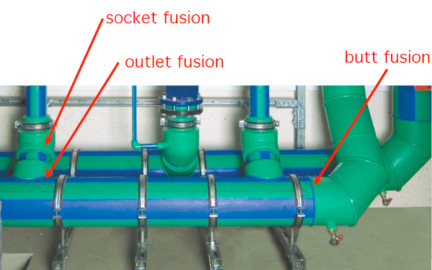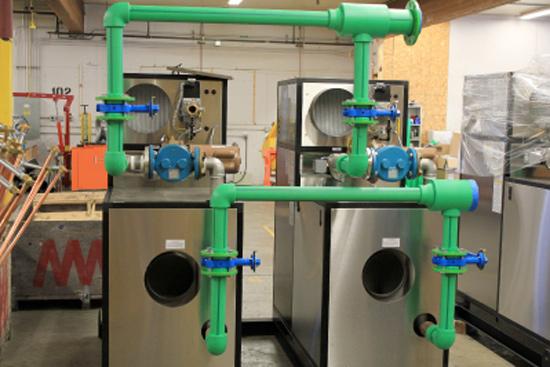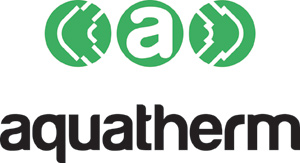Polypropylene-Random (PP-R) Piping Systems Serve Multiple Applications
LEED®
Upgrading to PP-R piping systems can contribute to LEED credits in several categories. One leading manufacturer has published a practical guide based on Version 3.0 for New Construction and Major Renovations for applying PP-R piping systems to the LEED credits program. As a starting point, it focuses on major strategies that address several credits at once, earning a number of points by implementing one large innovation. This would also be applicable to the recently published, but not yet implemented, LEED v4.
Installation
Ease and speed of installation is one of the biggest cost savers that results from using the innovative technologies and advantages of PP-R piping. But heat fusion connections and outlets, lightweight material, resilient, slightly flexible pipe and connections and reduced expansion and contraction are all technologies that require a different mindset from those familiar with metal or even other plastic systems.
Training
Manufacturers offer training courses and detailed manuals to prepare installers for using PP-R.

Image courtesy of Aquatherm
On-site heat fusion connections do not weaken the structure of the pipe and may be placed closer together than other branch-type connections.
Tooling
Fusion tools are a critical component of a PP-R installation. Installers should ensure they have optimal tools for each type of connection. Duplicate tools can speed installation, and the cost of rented or purchased tools can often be offset by increased efficiency.
Lightweight Material
Piping weighs 75 percent to 80 percent less than comparable metals, which means that installers can do more in-shop or onsite fabrication and move the piping with less fatigue and less risk of injury.
Comparatively Fast Connection Times
Heat fusion can save over 30 percent on labor time compared to traditional welding and soldering and is comparable to the quickest labor-saving connection methods.
Prefabrication
Some manufacturers offer in-house fabrication for manifolds and complex assemblies.
On-Site Fabrication
Since polypropylene is lighter than other piping materials, fusion joints adjust to reasonable levels of stress from being carried around. To take advantage of this, many installers set up prefab stations.

Photo courtesy of Aquatherm
These boiler skids were prefabricated in a major contractor’s shop, and then flown to the building’s roof by helicopter, saving considerable labor costs.
Supporting the Pipe
Installers should base hanger spacing on the intended operating temperature of the pipes, taking into account the temperature differential between the internal fluid and external ambient conditions. Manufacturers provide support interval tables.
Linear Expansion
This depends on the difference between installation temperature and operating temperatures. Again, manufacturers provide calculation tables as well as online tools for doing thermal expansion calculations and determining compensation for this.

Photo courtesy of Aquatherm
PP-R transition fittings allow PP-R pipe in systems that also use copper, PEX, steel and other piping materials.
Transition Fittings
Fittings for transition to steel, copper, PEX and to larger sizes of pipe are available. Transition elements with brass inserts are not suitable for all media. For corrosive applications, use connections and valves that are strictly polypropylene or stainless steel. The product manufacturer will provide guidance on whether fittings with metal inserts can be used in a given application. Brass transitions for use in potable water applications must comply with the zero-lead requirements, such as NSF 372.
Conclusion
Polypropylene-random piping (PP-R) for pressure systems has been successfully installed in thousands of projects in North America and Europe. Its benefits include durability, resistance to corrosion and ease of installation. It does not leach harmful chemicals, is code compliant, cost effective, sustainable and can contribute to LEED points. PP-R technology requires a different mindset from those familiar with metal or even other plastic systems. But contractors report that after an initial learning curve, installation is easier and faster than with other systems.
 |
Made from fully recyclable polypropylene-random (PP-R), Aquatherm’s highly engineered pipe systems deliver an environmentally friendly alternative to metal and plastic pipe for plumbing, HVAC and industrial applications. Aquatherm can handle 180°F water, yet doesn’t rust, corrode or leach. The simple heat fusion connection eliminates leak paths and is so reliable it comes with a 10-year multimillion-dollar warranty. www.aquatherm.com |








